Photo: Michael Ochs Archives/Getty Images
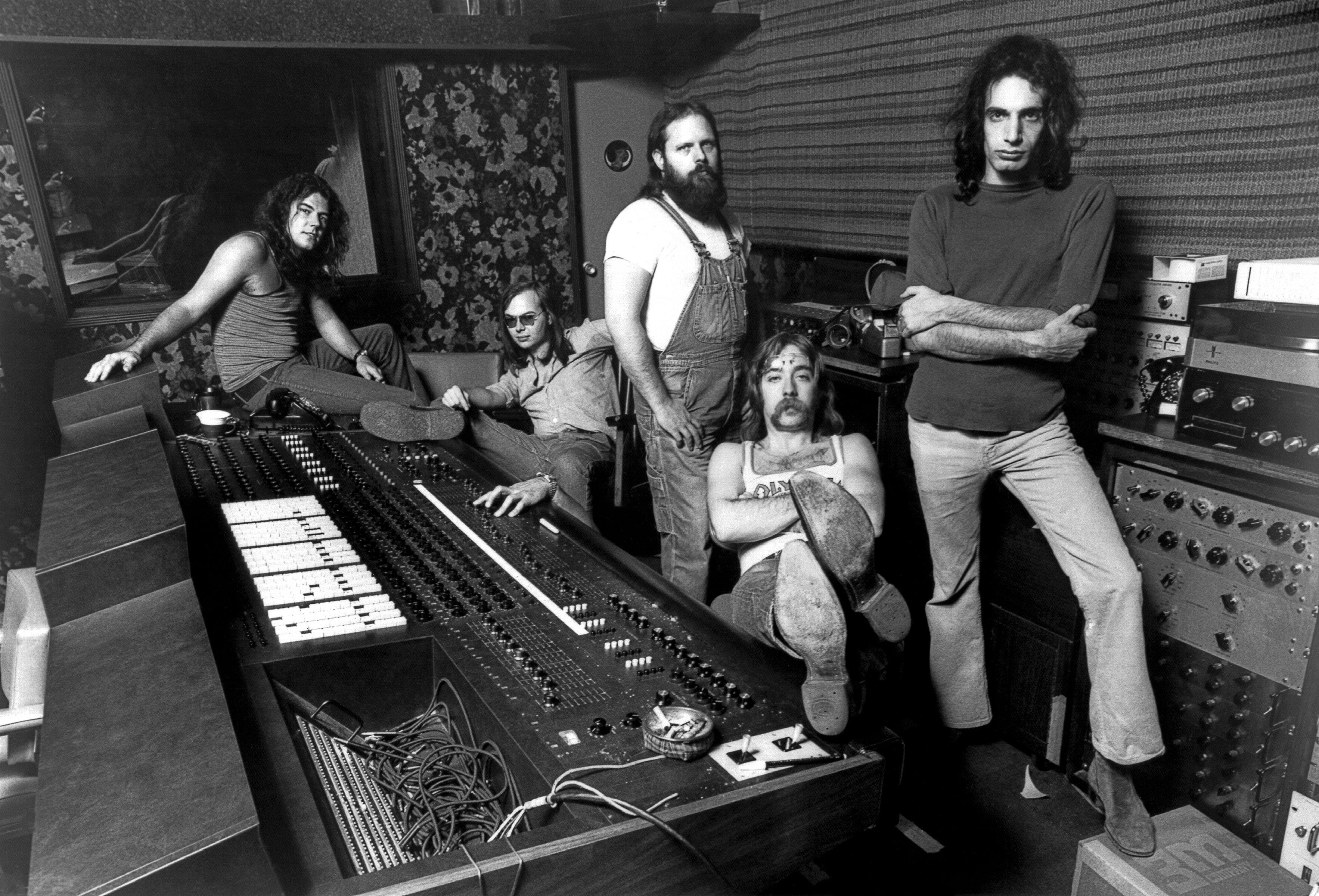
Steely Dan at The Village in 1973
news
History Of: Visit Iconic Recording Studio The Village, A Los Angeles Hidden Gem
Watch the latest episode of GRAMMY.com's History Of video series above to learn more about the inconspicuous West Los Angeles gem, located just down the street from the Recording Academy headquarters
There's something special about stepping into a space where albums you love were made. When you walk into historic Lost Angeles recording studio The Village and admire the countless gold and platinum records lining the walls, it's impossible not to feel inspired as you imagine the massive talent and creativity that the cozy building has held since 1968. If you listen closely enough, you can almost hear Stevie Nicks' angelic voice floating from Studio D or Dr. Dre and Snoop Dogg bringing G-funk to life in Studio A.
History Of: The World-Famous Troubadour In West Hollywood
Watch the latest episode of GRAMMY.com's History Of video series above to learn more about the inconspicuous West Los Angeles gem, located just down the street from the Recording Academy headquarters.
Hosting iconic artists throughout the decades, The Village is the birthplace of great albums like Fleetwood Mac's Tusk (1979), Janet Jackson's Damita Jo (2004), Dr. Dre's The Chronic and Lady Gaga's GRAMMY-winning A Star Is Born Soundtrack (2018) and Whitney Houston's GRAMMY-winning The Bodyguard Original Soundtrack (1992), to name a few.
Poll: From "Dreams" To "The Chain," Which Fleetwood Mac Song Is Your Favorite?

Photo: Amy Lee
list
5 Rising L.A. Rappers To Know: Jayson Cash, 310babii & More
From San Diego to the Bay Area, Seattle and beyond, the West Coast bursts with talent. Los Angeles is at the heart of this expanse, and these five rappers are just a few who are showcasing the vibrant sounds of West Coast hip-hop.
GRAMMY winners Kendrick Lamar and Mustard have long repped their California roots. Earlier this summer, their powerhouse anthem "Not Like Us" brought West Coast rap back to its roots and shone a global spotlight on the scene.
Lamar and Mustard are at the forefront of a renaissance in West Coast rap. Their shared roots in Southern California cities — Mustard from Los Angeles and Kendrick from Compton — adds authenticity and resonance to their partnership. Their undeniable chemistry was on display in the video for "Not Like Us," which received a million views less than an hour after its release.
Mustard's signature beats and Lamar's profound lyricism has resurfaced the sound and culture that makes West Coast rap so unique and paved the way for a new generation of artists. All signs suggest that another impactful collaboration may appear on Mustard's upcoming album, Faith of A Mustard Seed.
Learn more: A Guide To Southern California Hip-Hop: Definitive Releases, Artists & Subgenres From L.A. & Beyond
Kendrick Lamar headlined the electrifying Pop Out concert on Juneteenth, which also featured sets from Mustard and DJ Hed. The event saw a handful of L.A. rappers, opening for Lamar in a showcase of the vibrant talent that defines the region's rap scene.
The West Coast is a vast reservoir of talent, stretching from the Bay Area to Seattle. At the heart of this creative expanse is Los Angeles, which brings fresh perspectives, innovative styles, and renewed energy to hip-hop, ensuring the genre thrives. With the stage set for these newcomers to shine, it's the perfect time to take a closer look at some of the rising talents poised to impact the rap scene. While this list only scratches the surface, it offers a glimpse into the diverse and exciting talent from SoCal, the epicenter of the West.
Blxst
Arising from Los Angeles, Blxst initially played the background as a producer but soon demonstrated his ability to excel across all facets of music creation. Blxst's breakout moment came with his platinum-certified single "Chosen," which solidified his place in the music industry. His collaboration on Kendrick Lamar's "Die Hard" from Mr. Morale And The Big Steppers further showcased his skill for crafting hooks that elevate tracks, resulting in two GRAMMY nominations.
As he prepares to release his debut album, I'll Always Come Find You on July 19, Blxst stands at a pivotal point in his career. With a great resume already to his name, his forthcoming album promises to showcase his undeniable talent and leave a lasting impact on the West Coast music scene.
Bino Rideaux
Bino Rideaux is a South Central native and frequent collaborator with the GRAMMY-winning rapper Nipsey Hussle. He is the only artist to have a joint project with Hussle, No Pressure, released before the prolific rapper's untimely death. Rideaux has hinted at having a treasure of unreleased music with Hussle, saved for the perfect moment and album.
Rideaux is known for creating tracks that get the city outside and dancing. He has made three beloved projects with Blxst, titled Sixtape, Sixtape 2, and Sixtape 3 resulting in sold-out shows and a special place in West Coast Rap fans' hearts. Endorsed by industry heavyweights like Young Thug, Rideaux continues to carve his path at his own pace. His journey is nothing short of a marathon, echoing the enduring legacy of his mentor.
Kalan.FrFr
Kalan.FrFr, whose name stands for "For Real For Real," is an artist whose music is as genuine as his name suggests. Growing up in Compton and Carson, Kalan.FrFr has always stayed true to his roots, and exudes the unyielding confidence essential to making it in the City of Angels.
His breakthrough mixtape, TwoFr, showcased his ability to shine without major features, delivering verses with catchy hooks and melodic rap. He's shown he's not confined to one sound, delivering vulnerable tracks like "Going Through Things'' and "Never Lose You." His EP Make the West Great Again, Kalan.FrFr both proves his loyalty to his origins and highlights his versatility. Kalan.FrFr's signature punch-in, no-writing-lyrics-down style keeps his fans on their toes, ensuring that whatever comes next is unpredictable but authentic.
Jayson Cash
Jayson Cash, a rapper hailing from Carson — the same city as TDE artist Ab-Soul — stays true to West Coast rap, from his lyrics to his beat selection. Listening to Jayson Cash's music is like diving into a vivid life narrative. His prowess as a lyricist and storyteller shines through in every verse. He gives his fans an insight into his journey, making it a relatable music experience.
Cash made waves with his debut mixtape, Read The Room, and scored a Mustard beat on the song "Top Down." Two years later, their collaboration continues, with Cash writing on Mustard's upcoming album. Though often seen as an underdog, Cash is not to be underestimated, earning cosigns from West Coast legends like Suga Free and Snoop Dogg. His latest project, Alright Bet, includes a notable feature from Dom Kennedy.
310babii
310babii has achieved platinum-selling status at just 18 years old, while successfully graduating high school. Yet 310babii's career began in seventh grade, when he recording songs on his phone showing early signs of motivation and creativity. His 2023 breakout hit "Soak City (Do It)" quickly gained traction on TikTok — and caught the ears of Travis Scott and NFL player CJ Stroud.
As the song grew in popularity, it led to a remix produced by Mustard, who invited the Inglewood native to join him onstage during his set at The Pop Out. 310babii's innovative spirit shines through in his distinctive visuals, exemplified by the captivating video for his song "Back It Up." His recent debut album, Nights and Weekends, released in February, underscores his evolving talent and promise within the music industry.
Latest News & Exclusive Videos
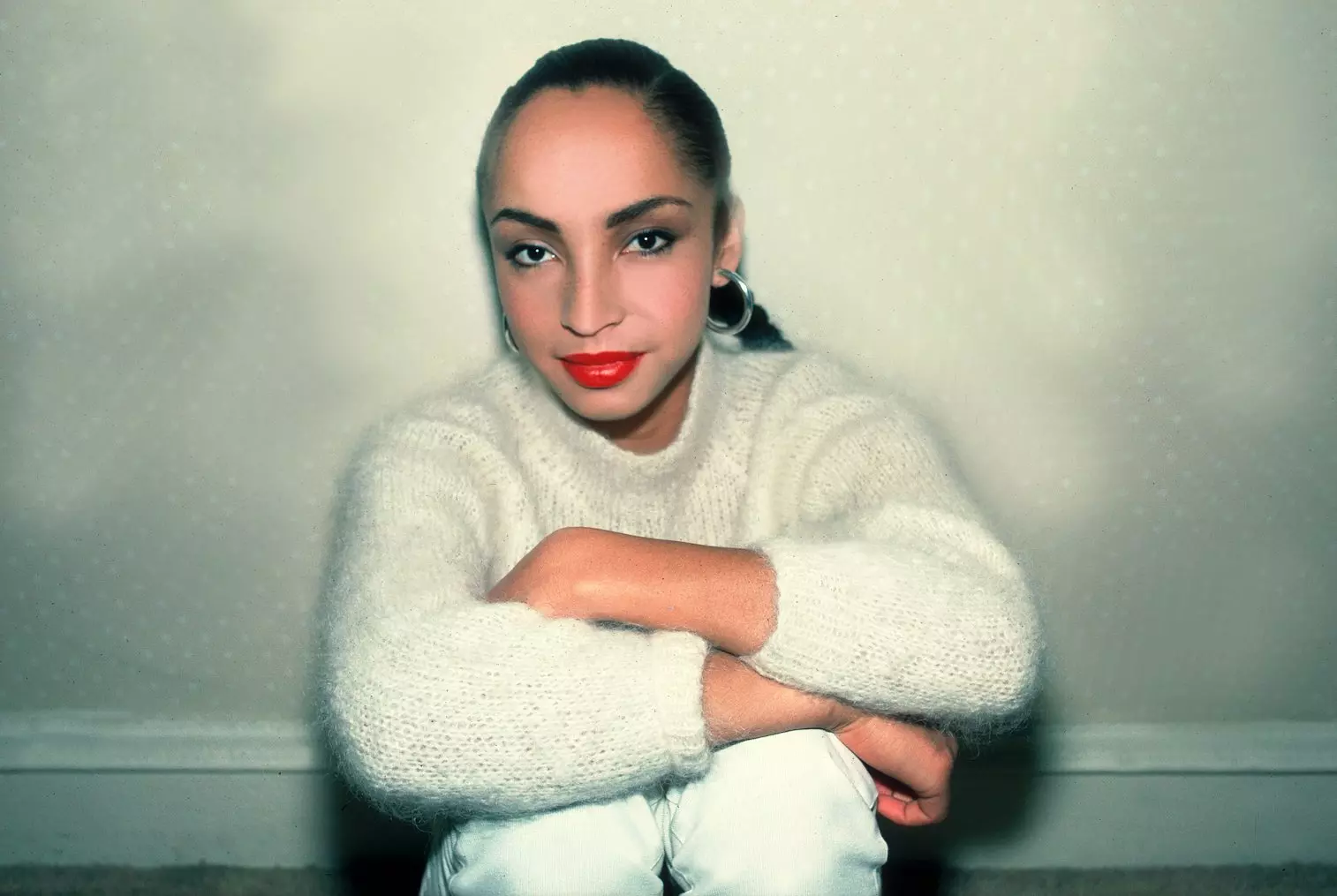
8 Ways Sade's 'Diamond Life' Album Redefined '80s Music & Influenced Culture

Katelyn Tarver's "Everyday Is A Winding Road"
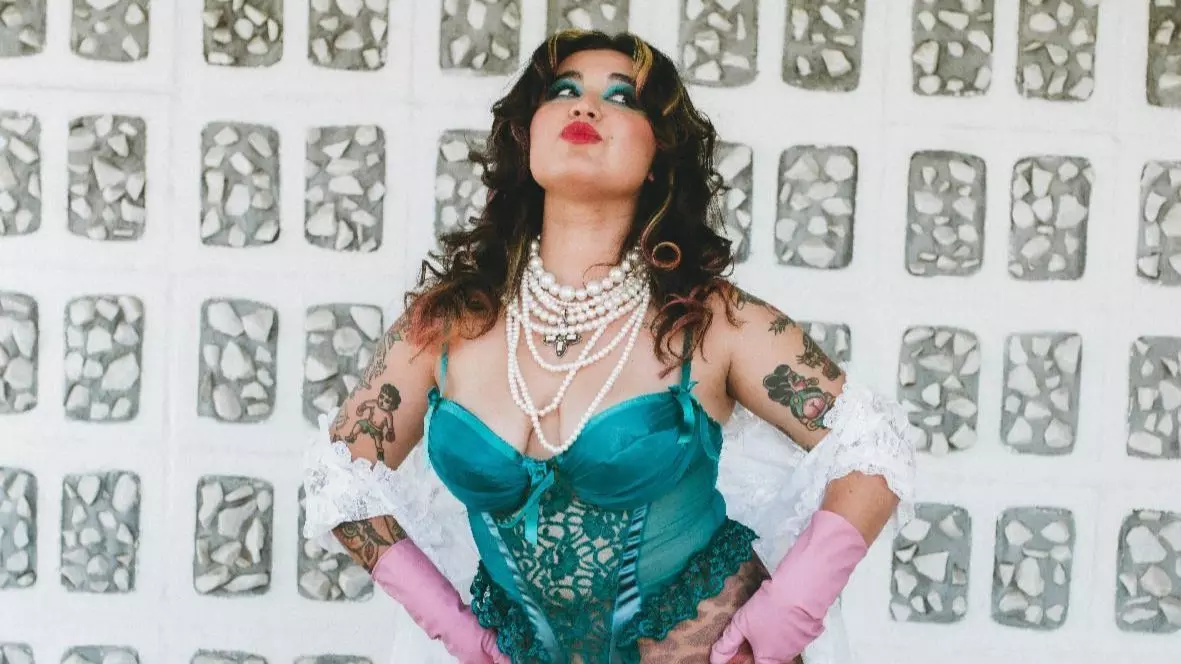
On New Album 'Big Ideas,' Remi Wolf Delivers Musical Poetry In Motion

Meet Derrick Hodge, The Composer Orchestrating Hip-Hop's Symphony

Behind Ryan Tedder's Hits: Stories From The Studio With OneRepublic, Beyoncé, Taylor Swift & More
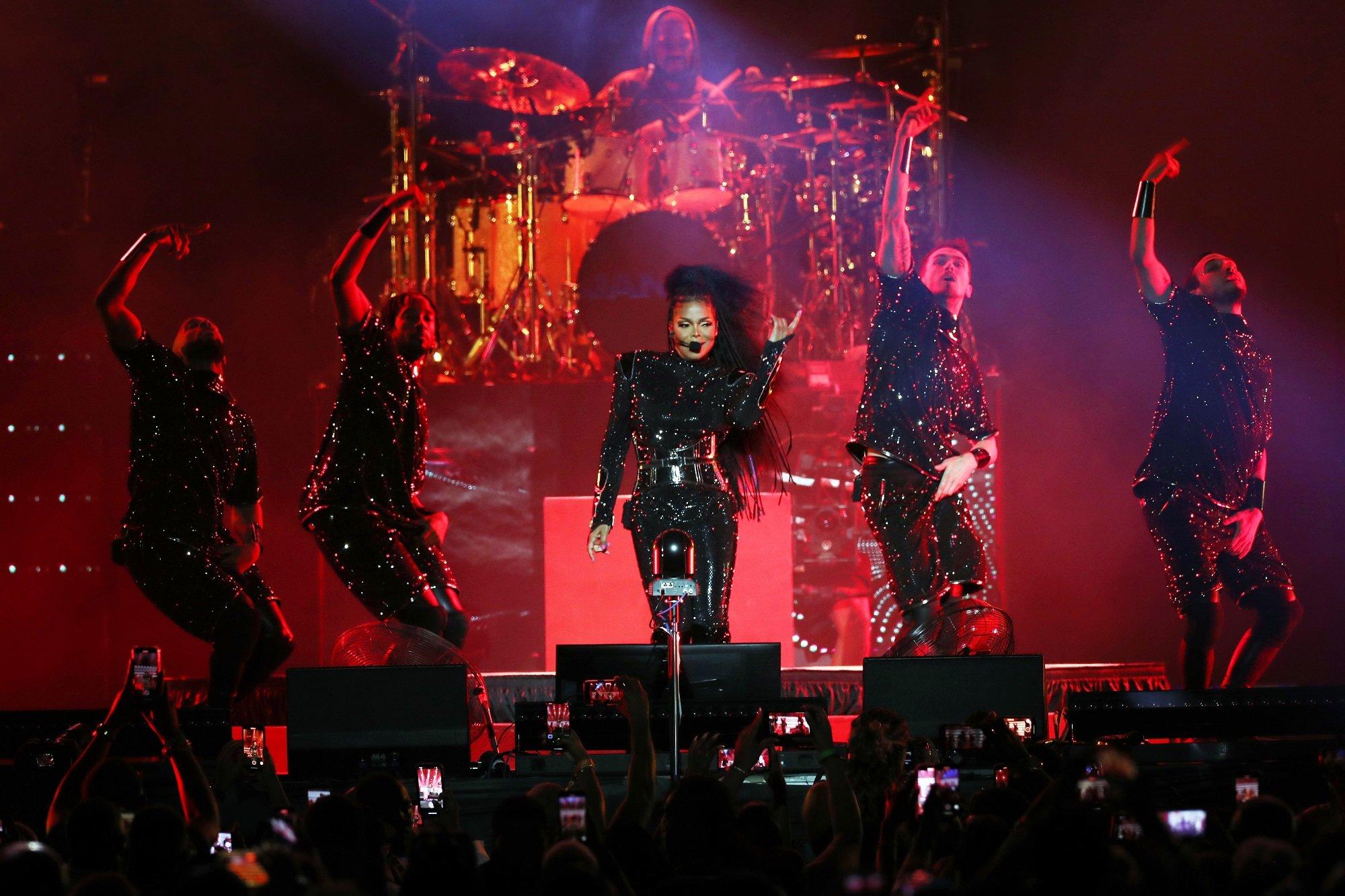
Photo Credit: Bennett Raglin/Getty Images for Essence
interview
Celebrating 30 Years Of Essence Fest: How New Orleans & Multi-Generational, Diasporic Talent Create The "Super Bowl Of Culture"
Ahead of the 30th Essence Festival Of Culture, held July 4-7 in New Orleans, GRAMMY.com spoke with executives and curators of the legendary celebration of Black excellence.
Every July, millions of Black people, specifically Black women, descend upon New Orleans for the Essence Festival of Culture (EFOC). Known for many years as the Essence Festival, the festival is a celebration of Black culture, community, and heritage. Since its inception in 1995 as a one-off event to commemorate the publication’s 25th anniversary, the festival has evolved into a diasporic jubilee, drawing in people of African descent from across the diaspora.
In addition to its global presence, the festival pours millions of dollars into the local New Orleans community, which has served as the festival's home for 30 years (with the exception of 2006, when the festival was held in Houston, because of Hurricane Katrina). In 2020, the festival was canceled because of the COVID-19 pandemic. Despite this, the annual festival continues to be one of the most sought-after and attended festivals in the United States.
This year’s Essence Festival of Culture will be held at the Superdome from July 4-7, replete with legendary and fast-rising talents. On July 5, Birdman & Friends will celebrate the 30th anniversary of Cash Money Records. The following day will feature a special performance by Charlie Wilson, while Usher will commemorate the 20th anniversary of Confessions.
Janet Jackson and Victoria Monét will headline the festival's final night, while Frankie Beverly and Maze close out the festival with the return of All-White Night. Other performers include The Roots featuring Mickey Guyton, Ari Lennox and T-Pain, Busta Rhymes, Raphael Saadiq, D-Nice featuring Shelia E, Big Boi, and many more.
Read more: Music Festivals 2024 Guide: Lineups & Dates For Lollapalooza, Coachella, Bonnaroo & Much More
EFOC has been compared to SXSW, Coachella, Austin City Limits, and other notable festivals, yet it stands out for its empowerment-centered approach. It is not simply a festival, it is a family reunion. The one festival in the United States that does not pander to or take advantage of Black audiences, but truly celebrates them and their achievements. Although music has always been an integral part of the festival’s ethos — Aretha Franklin and B.B. King performed at the first iteration — the festival excels in its multi-generational and interdisciplinary programming. On any given day, attendees can attend sessions on Black entrepreneurship, politics, mental health, and literature, as well as seminars focused on issues impacting the Black community.
There’s a reason why the festival is referred to as the party with a purpose. For decades, it has operated as a celebratory convening place for Black people, Black families, and Black communities. Now, more than ever, spaces like EFOC are needed, as the Black community experiences an onslaught of changes — from Historically Black Colleges and Universities in North Carolina and Tennessee being subject to intense government oversight, to Black women-owned venture capital firms being targeted by conservatives, and Black voting rights becoming at risk during an election year.
Ahead of the festival’s 30th celebration, Michael Barclay, Executive Vice President of Experiential for ESSENCE Ventures and Barkue Tubman Zawolo, Chief of Staff, Talent and Diasporic Engagement for Essence Ventures, spoke to the Recording Academy about the history, legacy, and future of the Essence Festival of Culture.
This interview has been edited for clarity.
Are you part of the generation that grew up with the Essence Festival of Culture? If so, how does it feel to be a part of it?
Barkue Tubman Zawolo: I'm originally from Liberia. And even being in Liberia, prior to my family moving to the U.S. in 1980, Essence was always a thing for my mom and my aunts. When we came here, fast forward to me, as an adult, [after] graduating college, I got into the music industry. I've managed artists that have gone through the Essence stages and pages in different ways.
Essence Fest has always been something that we were familiar with. I have to say, I had not really experienced Essence Fest until 2019 when Essence was actually a client. One of the things that I was doing [at that point] was integrating the Diaspora and African creatives within the festival in fashion and music.
To be in the role that I'm in right now and to be on a team with people who have been a part of Essence for a long time…. Essence seems to be ingrained in all of our fabric. [What] started as a music festival now is the Super Bowl of Culture that is the Essence Festival of Culture. To be on the team that helps bring this to life for our community is a daunting but rewarding task all in the same.
Essence is something that I don't think anybody in our community takes lightly. Even our partners understand the value of it. We certainly understand that we serve the Essence-inverse and, and we are in service to this community. It is a huge honor to be able to be a part of the team that brings this to life and, and, and constantly hear what it means to the community globally too.
One thing that I admired, especially about last year's festival, was GU Kickback — a music event hosted by Girls United, the publication’s Gen Z vertical. I saw a number of local artists from New Orleans, such as 504ICYGRL. ESSENCE just released a series of cover stories celebrating the 30 year relationship between the publication and New Orleans; how do you highlight the city and their history?
Michael Barclay: As somebody who's worked in experiential, creating gatherings and experiences for almost 25 years now, the venue is always important when you're trying to set the box where you are creating for your community, for your audience. New Orleans has been that backdrop for us for almost 30 years now.
New Orleans is the convergence of our mission, our brand, in a city that is perfectly matched for that energy. New Orleans is as much a part of Essence Festival of Culture as Essence Magazine is to Essence Festival.
It is very much a partnership that has created this cultural movement. To be more inclusive, and highlight more of those local relationships and talent is very intentional. It has been something that we have put a lot of energy and effort into over the last couple of years.
This will be my third festival this year. I think Barkue, you started maybe a year or two before me. We're a fairly new crew that is working to help grow and reshape and solidify those relationships. Even with how we handle the management of the festival.
Our VP of Essence Festival, Hakeem Holmes is a hometown boy from New Orleans. He's the pride and joy. They love to see him coming. He's always enlightening us on the things that we need to be focused on for the city and how we make the best partnership and make the best impact on the area.
It was intentional what you saw last year. It's intentional this year. We dedicated our entire festival edition of the magazine as a love letter to New Orleans. It's a symbiotic relationship that is one of the key reasons why this festival is the Super Bowl of Culture.
I would love to hear about the talent aspect of the festival. Last year, Megan Thee Stallion headlined. In previous years, Beyoncé and Prince have served as headliners. What is the formula between balancing local talent, national talent and diasporic talent at the festival?
Zawolo: As we grow the festival, the intentionality becomes even more and more important. And, what we do in understanding where we are as a brand.
We're 30 years into the festival, the brand is 55 years. What's traditionally known as the Essence Woman is now bringing her daughter. It's multi-generational. We also know that the world is as big as your cell phone, so people are now exposed to different types of content and music.
We see the influence of Afrobeats and Caribbean music. We are intentional about making sure that every night really speaks to multiple generations, but it's anchored in a generation. It's like, who's bringing, who to the concert on Friday? Is it the daughter bringing her mama?
It's anchored in that younger demo, but we're going to make sure that they're going to have a collective good time there. Saturday is usually our heaviest night. We have our living legends that show up there; that really cuts across generations. This is anybody can bring anybody, but let me tell you, you're going to be able to teach each other, connect with each other with the different groupings of talent that we have.
We try to make sure that there is something that speaks to us, but that that connects with the diaspora on as many nights as possible. Sometimes it's not because they're from a different country, but because we know the music also resonates.
If you think of Janet Jackson, you can go anywhere in the world. She can check off that box, although she's not from there. You can create those ties, but we also are intentional about having Ayra Starr and Machel Montano. Last year we had Tems and Wizkid. The goal is to continue to grow what that looks like, because we are a global brand and that is our diasporic and global intent in connecting the global Black community is really important.
We are intentionally multi-generational. We intentionally lead into where a multitude of generational communities can come together and have fun together. There is something for everybody. We have a unique opportunity with Essence as the brand grows to be able to not only speak to what they want to call the aunties, I call the punties. I also think that this is where we get to educate the next generation on where we're coming from. We also get to learn from them on where they are and where they want to go.
What a beautiful way to kind of tie all of these connections. Last year, the festival celebrated 50 years of hip-hop; this year you're celebrating the 30th anniversary of the festival. What is the intention behind this year’s music programming?
Zawolo: Paying homage to people who had done some historical things on our stages. We have Janet [Jackson] back. People are like, “Oh, we saw Janet two years ago,” but Janet is also one of the highest sellers in the festival's history.
If we're going to celebrate, let's celebrate, because we know Janet never disappoints. We also want to lean into some of the [older] talent, like Charlie Wilson, Uncle Charlie. He's graced that stage so many times, but yet it's still very relevant. Using this moment to reignite things that we've done in the past and bring them back to life that we know the audience missed.
Frankie Beverly, who is going to come, this is probably going to really be his last performance. The passing of the torch. This year was about having to be intentional about what other milestones are happening that are important to this culture. Cash Money is also celebrating 30 years. Who better, right?
Essence has been in New Orleans for 30 years. Cash Money and crew are from New Orleans. Juvenile just got the key to the city from the mayor. We want to honor and celebrate him, but we also want to recognize the influence that this group of very creative, entrepreneurial, rappers and artists have had on culture, because there was a time where we all were backing that ass up.
Making sure we highlighted milestones, connecting with people who have historically been a part of making history with us, introducing some new ones — that's what we have to do. We have to set up now for the next 30 years. We want to go to the soul of what appeals to our audience, and we're really all about good music.
I think the 30th year just continues to do what we do. As we look to grow and connect demos, Megan Thee Stallion is a very viable option because again, the daughter now is going to bring the mama. Intergenerational diasporic and connecting demos, I think that only happens at the Superdome. That's also happening in the convention center, which I believe is honestly the soul of the festival.
What are your hopes and aspirations for the next 30 years of the Essence Festival of Culture? Will Essence Fest always be in New Orleans? Are we going to have an Essence Fest in Lagos, Nigeria?
Barclay: Being on this side of [EFOC], seeing the true impact of the festival and how it impacts the communities, how it impacts the folks that come to New Orleans, and now, because we've expanded to our virtual audience, the 1.7 million that are viewing around the world, my hope for the festival is that we continue to show up where our community needs us.
We're going to be in New Orleans. We're going to be in our official world as we call it. If you can't make it to New Orleans, you can tune into Essence.com and you can see what's going on there. We are creating virtual experiences, AR experiences, VR experiences, all those things, so really keeping up with the way that people continue to connect with each other, whether they're physically in the same place or halfway across the world.
I think that type of innovation is what I want to continue to see us do and allow us to create that joy that we generate in New Orleans and wherever it's needed for our community.
PRIDE & Black Music Month: Celebrating LGBTQIA+ & Black Voices
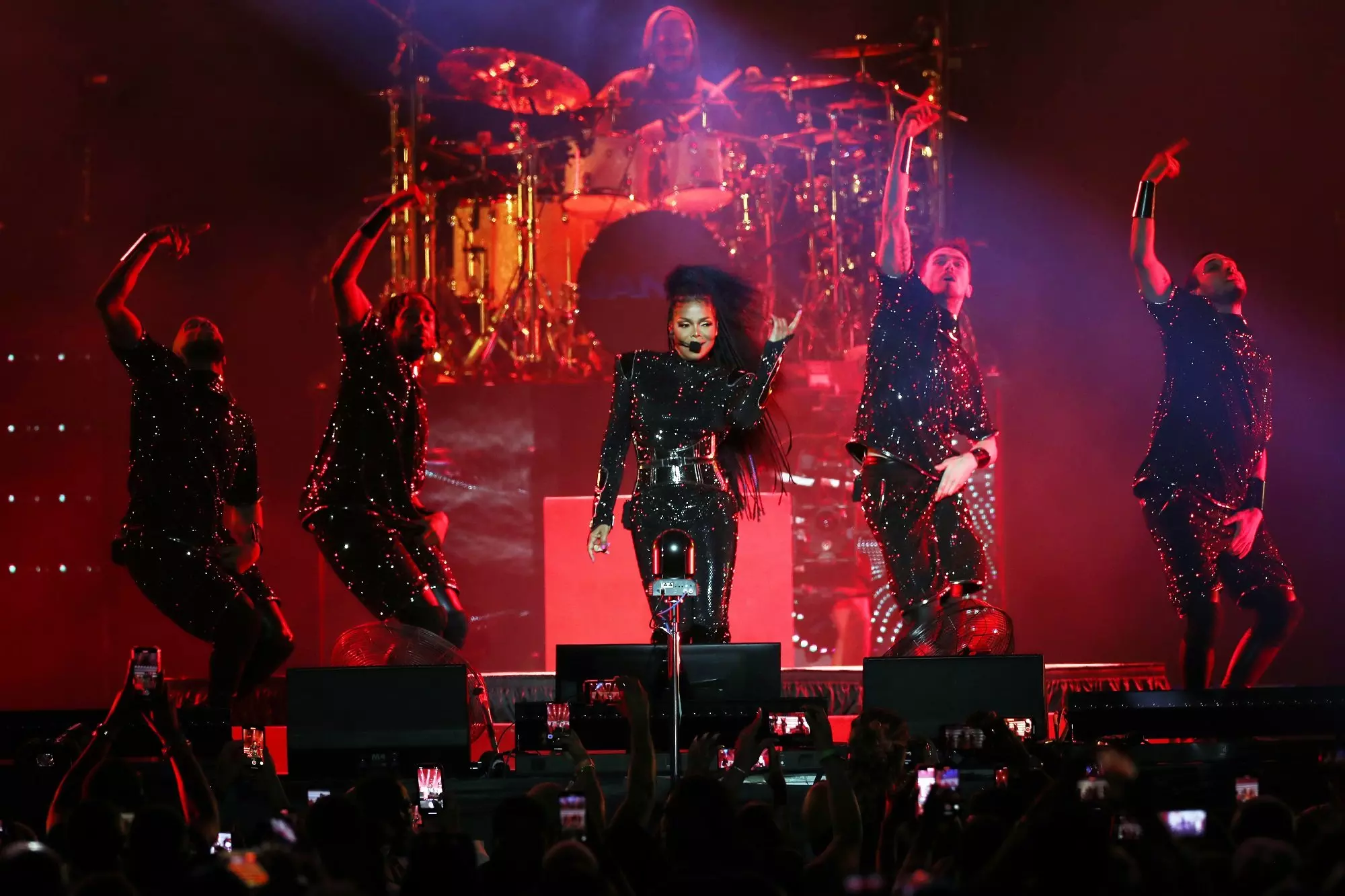
Celebrating 30 Years Of Essence Fest: How New Orleans & Multi-Generational, Diasporic Talent Create The "Super Bowl Of Culture"
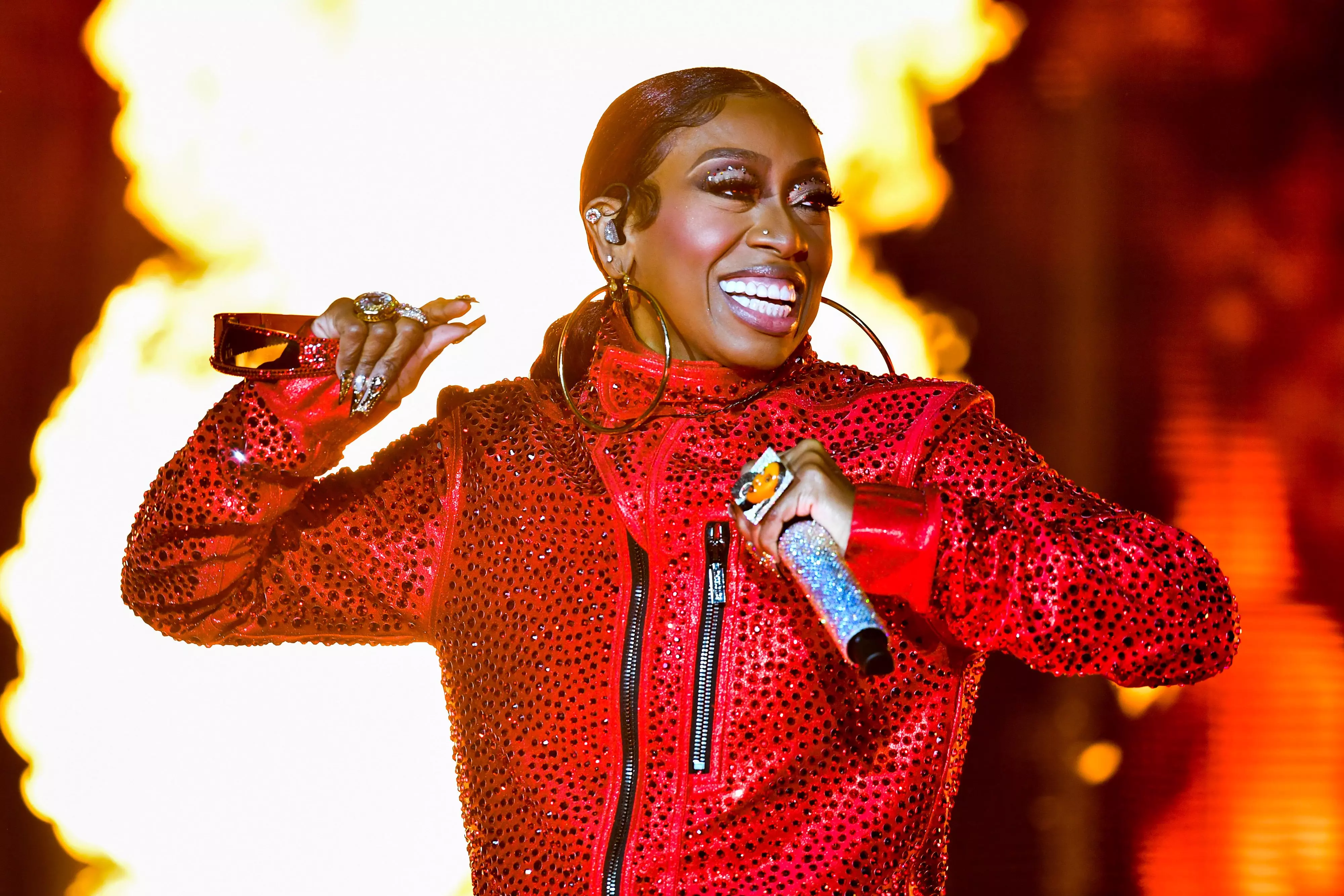
Celebrating Missy Elliott: How The Icon Changed The Sound, Look & Language Of Hip-Hop

Tekno Talks New Music, Touring America & His "Elden Ring" Obsession
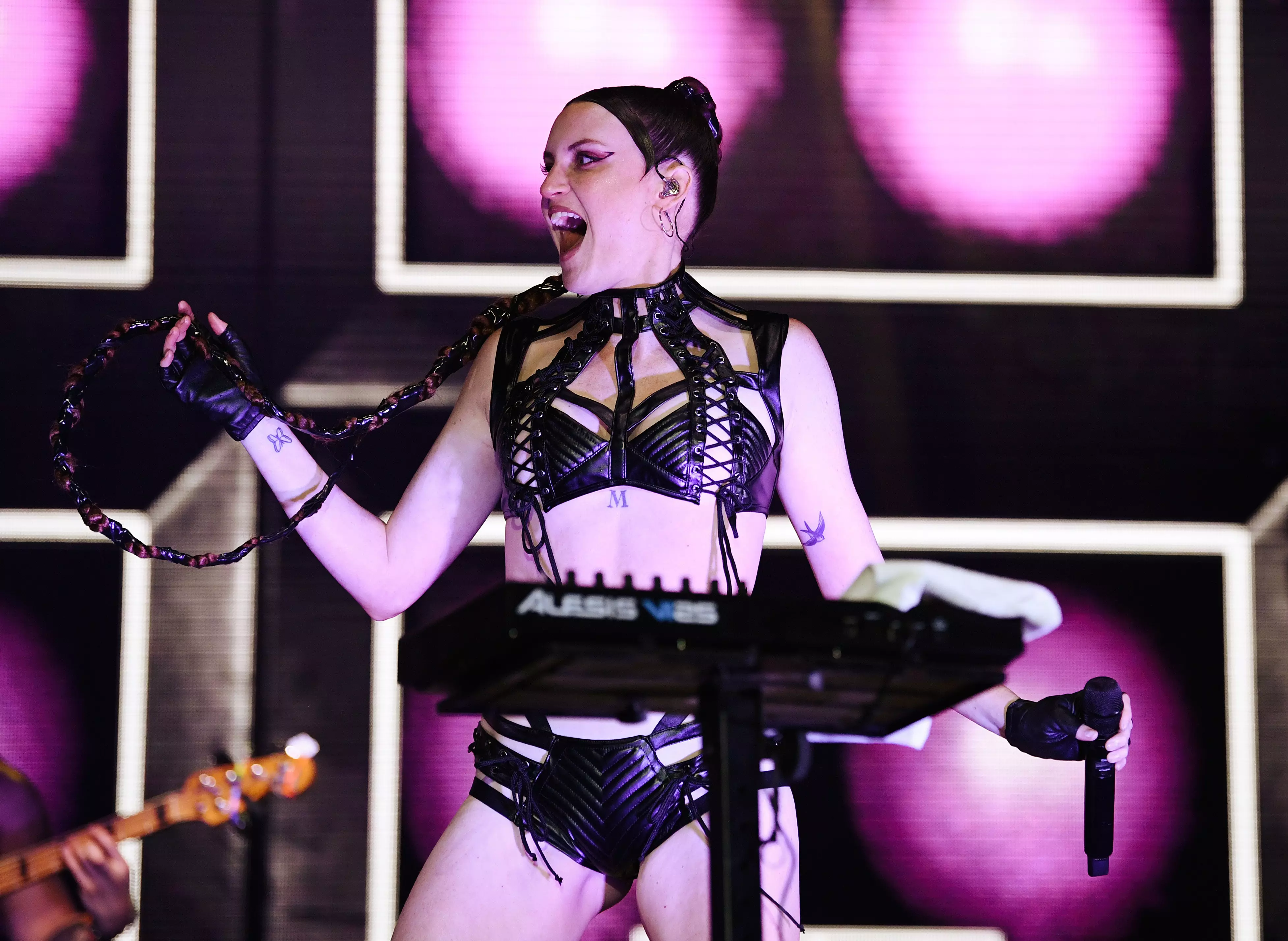
5 LGBTQIA+ Record Labels To Check Out: Get Better Records, So Fierce! And Others
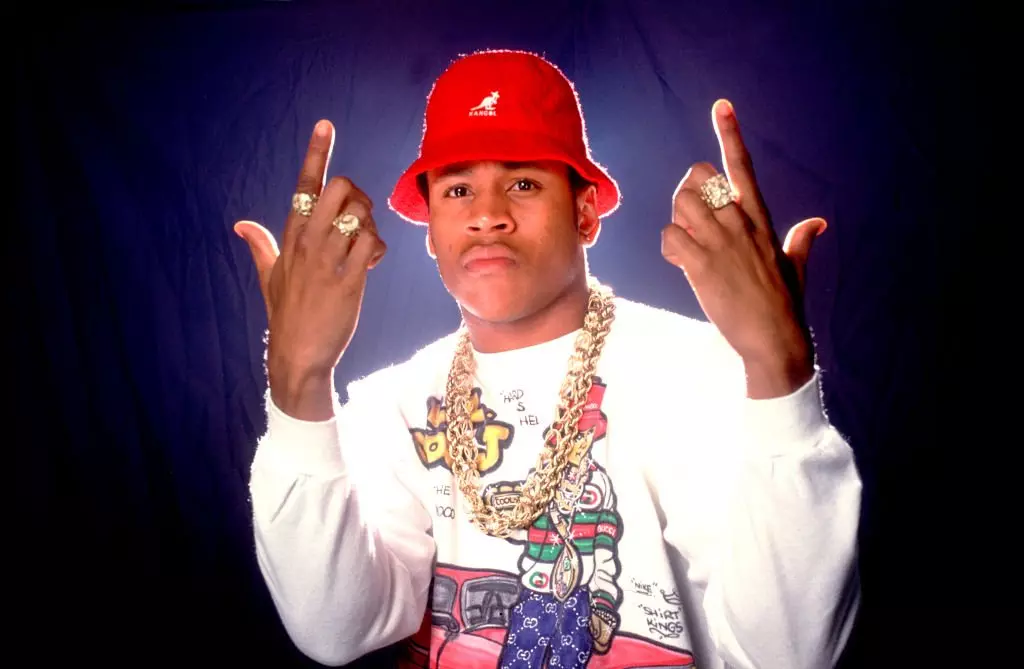
Celebrate 40 Years Of Def Jam With 15 Albums That Show Its Influence & Legacy
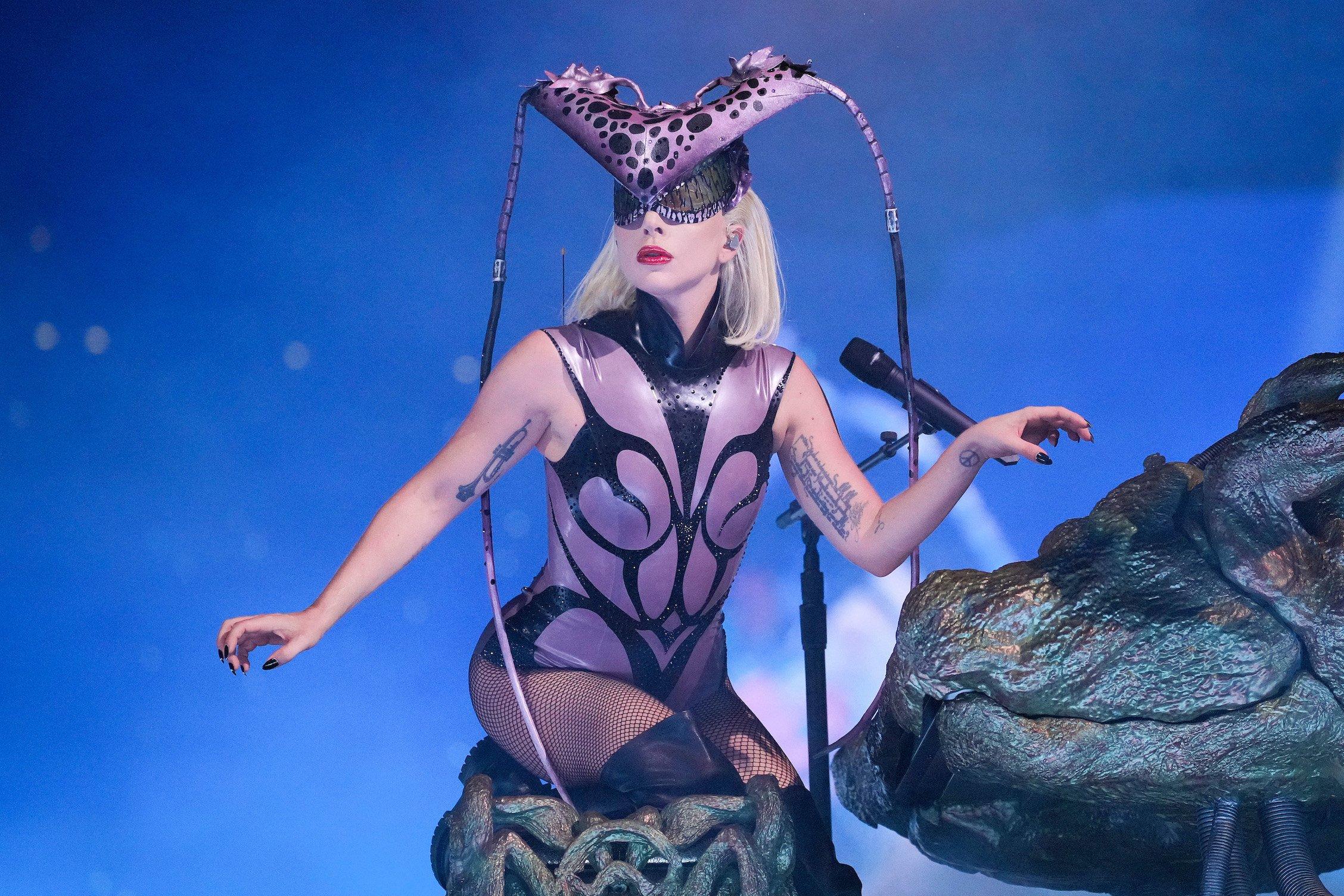
Photo: Kevin Mazur/Getty Images for Live Nation
list
Lady Gaga's Biggest Songs: 15 Tracks That Show Her Avant-Garde Pop Prowess
As fans relive the exhilarating spectacle of Lady Gaga's 2022 stadium tour with a new HBO Max concert film, 'GAGA CHROMATICA BALL,' jam out to 15 of her signature songs, from "Poker Face" to "Rain on Me."
Nearly two years after bringing her 2020 album Chromatica to life with a sold-out stadium tour, Lady Gaga is bringing The Chromatical Ball to your living room. GAGA CHROMATICA BALL, an HBO Original special that premieres May 25 exclusively on MAX, will take Little Monsters into the mesmerizing, colorful world the 13-time GRAMMY winner crafted with her sixth studio set.
The Chromatica Ball was a joyful cultural triumph as the world emerged from lockdown, hitting 20 stadiums across Europe, North America and Asia in the summer of 2022. While it was named after Chromatica and featured the majority of the dance-driven album's track list — including the smash Ariana Grande duet, "Rain On Me," and lead single "Stupid Love" — the tour was a celebration of the breadth of her acclaimed career as a whole, which has spanned decades, genres, styles, and entire industries.
GAGA CHROMATICA BALL documents Lady Gaga's sold-out September 2022 show at Dodger Stadium in Los Angeles, which was one of the biggest venues on the tour. Showcasing a stage inspired by brutalist architecture and a set list stretching from the pop star's 2008 debut album, The Fame, to her Top Gun: Maverick track, "Hold My Hand," the film will also take fans inside the raw passion Gaga brings to each and every live show.
In celebration of the concert film, GRAMMY.com revisits 15 of Gaga's most career-defining songs to date, from early hits like "Poker Face" to stunning deep cuts like Chromatica's "Free Woman."
"Just Dance" (feat. Colby O'Donis), The Fame (2008)
Lady Gaga burst onto the scene in 2008 with a fully realized point of view and pop star persona, but her debut single actually wasn't an immediate smash on the charts. Instead, "Just Dance" served as the sleeper hit that kick-started Gaga's legendary career, landing at the precipice of the Billboard Hot 100 after a 22-week climb from its initial entry at No. 76 to the nascent pop star her very first No. 1 hit.
A polished dance floor banger produced by RedOne and co-written with Akon, "Just Dance" perfectly crystallizes the dance-pop resurgence of the late 2000s that Gaga not only helped spearhead, but masterfully rode into the upper echelon of 21st century pop stardom. Notably, the song also earned Gaga the first GRAMMY nomination of her career for Best Dance Recording in 2009 — a full year before her debut album would announce itself as a major force at the 2010 ceremony.
"Poker Face," The Fame (2008)
If "Just Dance" set expectations sky high for the music Gaga had up her well-manicured sleeve, "Poker Face" majorly surpassed them — and subsequently, became one of the defining pop songs of the decade. With its relentless rhythm, sing-song "Po-po-po-poker face, po-po-poker face" refrain, and winkingly naughty lyrics ("'Cause I'm bluffin' with my muffin," anybody?), the song proved Gaga knew how to expertly construct an earworm while delivering a high-concept visual spectacle in spades.
"Poker Face" became the singer's second consecutive No. 1 single on the Hot 100, marking the first time a brand-new artist had accomplished the feat since Christina Aguilera's one-two punch of "Genie in a Bottle" and "What a Girl Wants" a full decade prior. By year's end, "Poker Face" had become top-selling single of 2009 across the globe, and the following year, it earned Gaga her first nods for both Song Of The Year and Record Of The Year at the 2010 GRAMMYs, with The Fame also being nominated for Album Of The Year.
Though the song and LP ultimately lost in the major categories, they respectively took home the golden gramophones for Best Dance Recording and Best Electronic Dance Album, officially making Gaga a GRAMMY-winning artist after less than two years in the industry.
"The Fame," The Fame (2008)
While it was never released as an official single, the title track off Gaga's 2008 debut album serves as something of an early thesis statement for the avant garde star who so confidently declared, "POP MUSIC WILL NEVER BE LOWBROW" as she burst from New York City's underground scene to the global stage.
Gaga lays bare her ambitions with brazen clarity on the punchy electronic track, as she gushes over her single-minded love for "runway models, Cadillacs and liquor bottles" and sings, "Give me something I wanna be/ Retro glamor, Hollywood, yes we live for the fame/ Doin' it for the fame/ 'Cause we wanna live the life of the rich and famous." Later on the song's bridge, the pop star vows, "Don't ask me how or why/ But I'm gonna make it happen this time," and in retrospect, there's no denying Gaga accomplished everything she set out to achieve at the start of her career.
"Bad Romance," The Fame Monster (2009)
The Fame heralded Gaga as the next big thing in pop music. But rather than spend a couple years fine-tuning her follow-up, the newly minted star decided to double down while the iron was red hot by reissuing the album as The Fame Monster, complete with eight new songs. And in doing so, she catapulted herself to superstar status with just five syllables: "Ra-ra-ah-ah-ahh."
If the Gaga of "Just Dance" and "Poker Face" was a flashy striver fighting her way to the center of the cultural zeitgeist, "Bad Romance" presented Gaga as a high-fashion pop queen ready to turn her coronation into a victory lap. Not only did "Bad Romance" score Gaga her fifth consecutive top 5 hit on the Billboard 200, it also won her the GRAMMYs for Female Pop Solo Performance and Music Video/Short Form in 2011. (The Fame Monster, meanwhile, took home the golden gramophone for Pop Vocal Album — the first of Gaga's four nominations and counting in the category.)
"Telephone" (featuring Beyoncé), The Fame Monster (2009)
"Hello, hello, baby, you called, I can't hear a thing…" On its face, "Telephone" may sound like a garden variety electro-pop bop, but Gaga turned the track into an unforgettable club banger of the highest order by recruiting the one and only Beyoncé. The two superstars play off one another with panache as they shrug off responsibility and incessant calls from home in favor of giving into the music.
The single's murderous, Jonas Åkerlund-directed visual remains one of the most iconic in Gaga's storied visual history. Fourteen years after Gaga and Honey B drove off in the Pussy Wagon with the promise to never come back, Little Monsters and the Beyhive are still clamoring for a follow-up. Need proof? Just look at the internet frenzy Queen Bey caused when she appeared driving a similarly hued taxi in a teaser for the album that became COWBOY CARTER earlier this year.
"Born This Way," Born This Way (2011)
Almost from the moment she emerged onto the national consciousness, Gaga was considered a gay icon in the making, proudly advocating for the queer community — and in turn, cultivating a passionate, devoted LGBTQ+ fan base who worshiped at the feet of Mother Monster. So, naturally, she used her 2010 sophomore album to gift the masses with the Pride anthem of a generation.
Drawing comparisons to Madonna's "Express Yourself," "Born This Way" became a defining hit of the 2010s and helped empower listeners from the clubs, to the streets, to the inside of the closet to embrace what makes them special and fearlessly declare, "Baby, I was born this way!" Additionally, the gay anthem holds the distinction of being the 1,000th No. 1 hit in the history of the Billboard Hot 100, as well as Gaga's first single to bow at the top of the chart upon its debut.
"Yoü And I," Born This Way (2011)
Though she would go on to explore the genre further in 2016's Joanne, Gaga pretty much perfected her interpretation of classic Americana with the country-rock stomp of "Yoü and I" in 2011. Released as the fourth single from Born This Way, the gutsy power ballad found the singer driving a muscle car right through the glitzy, electro-pop aesthetic of her past as she wailed, "This time I'm not leavin' without you" over a sample of Queen's "We Will Rock You" and an original electric guitar line by none other than Brian May himself.
The music video for "Yoü And I," meanwhile, was classically high-concept in the most Gaga of terms. It saw the star transform into a number of alter egos including Yüyi the mermaid and the snarling, chain-smoking Jo Calderone. Whether running through the Nebraska cornfields of the song's setting or being brought back to life a la bride of Frankenstein by future ex-fiancé Taylor Kinney, Gaga proved that she could make a visit to America's heartland as avant-garde as ever.
"Marry The Night," Born This Way (2011)
Among Born This Way's litany of hits, "Marry the Night" is widely regarded among Little Monsters as something of a cult favorite. Though it didn't ascend quite as high up the charts as preceding singles like "Judas" or "The Edge of Glory," the track's music video might just be the most autobiographical visual the New York City native has ever released.
As the fantastical clip opens on an unconscious Gaga lying prone in a hospital bed wearing "next season Calvin Klein" and custom Giuseppe Zanoti, the singer lays out her entire approach to her artistry. "When I look back on my life, it's not that I don't want to see things exactly as they happened, it's just that I prefer to remember them in an artistic way," she explained. "And truthfully, the lie of it all is much more honest because I invented it…
"It's sort of like my past is an unfinished painting," she continues. "And as the artist of that painting, I must fill in all the ugly holes and make it beautiful again. It's not that I've been dishonest; it's just that I loathe reality." Gaga's rejection of the ordinary in favor of artistic reinterpretation has given fans not only the creative explosion of "Marry the Night," but the entirety of the pop star's avant-garde oeuvre.
"The Lady Is a Tramp" (with Tony Bennett), Duets II (2011)
Smack dab in the middle of Gaga's Born This Way era, Tony Bennett invited Gaga to duet on his 2011 album, Duets II. The pair's charming, spunky rendition of the Rodgers and Hart classic "The Lady is a Tramp" not only opened the album, but it showcased an irrepressible chemistry between the two stars that led to two more collaborative full-length albums, 2014's Cheek to Cheek and 2021's Love For Sale — both of which won GRAMMYs for Best Traditional Pop Vocal Album.
The song ultimately became something of a cheeky hallmark to how much Gaga and Bennett adored one another; even after they'd released an album full of jazz standards like Cole Porter's "Anything Goes" and Irving Berlin's "Cheek to Cheek," the young pop ingénue chose to sing "The Lady Is a Tramp" for Bennett's 90th birthday celebration at Radio City Music Hall, dedicating it to her friend as he beamed from the front row.
The pair's sweet friendship would continue on all the way until Bennett's death in 2023 following a years-long battle with Alzheimer's disease. In a heartfelt social media tribute, Gaga shared the impact of Bennett's friendship: "Sure he taught me about music, about showbiz life, but he also showed me how to keep my spirits high and my head screwed on straight."
"Applause," ARTPOP (2013)
She lives for the applause! For the lead single for her 2014 album ARTPOP, Gaga shined a spotlight back on the parasocial relationship and adoration that comes with fame. This time, though, the pop star demands listener participation rather than simple voyeurism as she belts, "Give me that thing that I love/ Put your hands up, make 'em touch!"
In the song, Gaga also shares the complex philosophy behind the album's title ("Pop culture was in art, now art's in pop culture in me.") But between shouting out famed sculpturist Jeffrey Koons (whom she commissioned to create the iconic ARTPOP cover art) and referencing everything from Botticelli's The Birth of Venus to the pop iconography of Andy Warhol in the surrealist music video, Gaga's message was deceptively simple: She lives for the A-P-P-L-A-U-S-E, baby.
"Aura," ARTPOP (2013)
When it came time to present the highbrow themes of ARTPOP to the masses, Gaga chose to open the 2013 iTunes Festival with "Aura," a frenetic exploration of fame, celebrity, suppression and identity built over a skittering sonic palette inspired in equal parts by Middle Eastern music, spaghetti Westerns and mariachi.
Though she initially faced some backlash over accusations that she had appropriated the wearing of a Muslim burqa in the song's lyrics, "Aura" effectively set the stage for ARTPOP as a piece of sophisticated performance art unlike anything Gaga had created before — all while promising fans a glimpse "behind the curtain" at the girl underneath the camp and artistry. And though ARTPOP may have been more than a bit misunderstood at the time of its release, it arguably remains the boldest and bravest album in Gaga's manifold discography.
"Joanne," Joanne (2016)
Gaga found inspiration for her fifth studio album from the life and death of her late aunt (and namesake), Joanne Stefani Germanotta. The singer never met her relative, but Joanne's spirit was imbued throughout the album, from its homespun lyricism to its stripped-back sonic palette that found the singer exploring the sounds of country, soft rock and Americana.
Nowhere on the record is Gaga's profound connection to her aunt more evident than the title track, which she recorded two different versions of and released as the album's third and final single. "Take my hand, stay Joanne/ Heaven's not ready for you/ Every part of my aching heart/ Needs you more than the angels do," she sings softly over a spare piano line on "Joanne (Where Do You Think You're Goin'?)."
With its roots in her family tree, the song clearly holds a special place in Gaga's heart — especially considering she chose to mix it with "Million Reasons" for her performance at the 2018 GRAMMYs. (A full year later, she took home the GRAMMY for Best Pop Solo Performance in 2019 for the acoustic piano version.)
"Shallow" (with Bradley Cooper), A Star Is Born (2018)
"I can see myself in the movies/ With my picture in city lights," Gaga memorably sang in "The Fame." And a decade later, she manifested her dream into reality with a starring role in the 2018 remake of A Star Is Born.
Opposite Bradley Cooper, the singer proved she had plenty of star quality on the silver screen on top of her status as a pop supernova. The movie musical's soundtrack was also dominated by Gaga's vulnerability and vocal abilities, fully giving herself over to the story of a star-crossed love that ends in superstardom and tragedy — particularly on the emotional keystone that is "Shallow." In fact, by the time she lets out her famous, guttural wail in the song's emotional bridge, it's easy to forget that "Shallow" is, in fact, a duet rather than a dazzling showcase of Gaga's chops.
On top of being an essential touchstone in Gaga's canon, "Shallow" is also memorable for being the song that turned Mother Monster into an Oscar winner after she, co-writer Mark Ronson and the rest of their collaborators took home the trophy for Best Original Song at the 2019 Academy Awards. (The song also won a GRAMMY for Best Pop/Duo Group Performance that year.)
"I've worked hard for a long time," Gaga said through tears while accepting her Oscar. "And it's not about winning, but what it's about is not giving up. If you have a dream, fight for it. There's a discipline for passion, and it's not about how many times you get rejected or you fall down or you're beaten up. It's about how many times you stand up and are brave and you keep on going."
"Rain On Me" (with Ariana Grande), Chromatica (2020)
Gaga's Chromatica era began with "Stupid Love" and its colorful, Power Rangers-chic video, but the star hit peak pop excellence by joining forces with Ariana Grande on the album's second single "Rain on Me."
"I'd rather be dry but at least I'm alive/ Rain on me, rain, rain," the two superstars harmonized on the house-fueled disco fantasia's upbeat refrain, before letting the beat drop and giving in to the impulse to dance it out. Released in the early days of the coronavirus pandemic, the track provided hope, joy and a message of hard-fought resilience at a scary, unpredictable and unprecedented time when it felt like the world was ending as we knew it.
The following year, Gaga and Grande won the GRAMMY for Best Pop/Duo Group Performance at the 2011 ceremony, becoming the first female collaborators to take home the award in GRAMMYs history.
"Free Woman," Chromatica (2020)
"Free Woman" was a bit overlooked when it was released as Chromatica's fourth and final single in the spring of 2021, but the narrative Gaga shares on the jubilant track is central to her personal history and experiences in the music industry. Over a thumping Eurodance-leaning beat, she recounts the PTSD she suffered from after being sexually assaulted by an unnamed producer early in her career.
Gaga also offers a rallying cry for her beloved LGBTQ+ fan base on the song, particularly those in the trans community, as she belts, "This is my dance floor I fought for/ Ain't hard, that's what I'm livin' for…We own the downtown, hear our sound." Ultimately, that empowering lyric is a notion that encapsulates the overarching theme of Gaga's career thus far — one that fans around the world can revel in again and again with GAGA CHROMATICA BALL.
Explore The World Of Lady Gaga

Watch Lady Gaga Bring "Born This Way" To Life On The GRAMMYs Stage | GRAMMY Great Performance
For The Record: The Liberating Joy Of Lady Gaga's 'Born This Way' At 10
10 Reasons Why 'ARTPOP' Is Lady Gaga’s Bravest Album

How Lady Gaga Changed The Music Industry With Dance-Pop & Unapologetic Feminism | Run The World
What Is Lady Gaga's Real Name? 7 Facts To Know About The GRAMMY-Winning 'Chromatica' Singer

Watch Lady Gaga Advocate For Mental Health Awareness During Her Win For "Shallow" In 2019 | GRAMMY Rewind
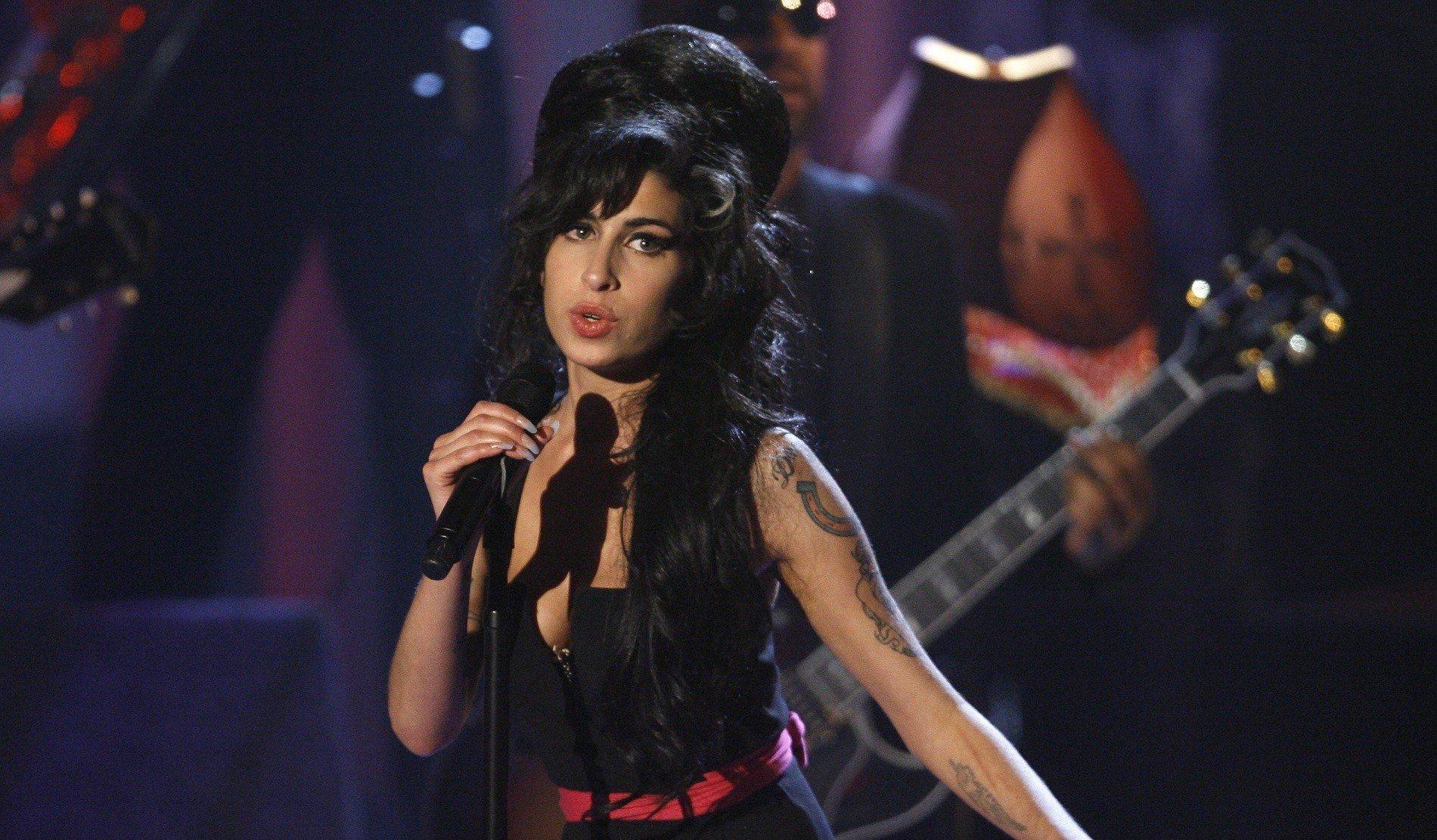
Photo: Chris Polk/FilmMagic
list
How Amy Winehouse's 'Back To Black' Changed Pop Music Forever
Ahead of the new Amy Winehouse biopic 'Back To Black,' reflect on the impact of the album of the same name. Read on for six ways the GRAMMY-winning LP charmed listeners and changed the sound of popular music.
When Amy Winehouse released Back To Black in October 2006, it was a sonic revelation. The beehive-wearing singer’s second full-length blended modern themes with the Shangri-Las sound, crafting something that seemed at once both effortlessly timeless and perfectly timed.
Kicking off with smash single "Rehab" before blasting into swinging bangers like "Me & Mr. Jones," "Love Is A Losing Game," and "You Know I’m No Good," Black To Black has sold over 16 million copies worldwide to date and is the 12th best-selling record of all time in the United Kingdom. It was nominated for six GRAMMY Awards and won five: Record Of The Year, Song Of The Year, Best New Artist, Best Female Pop Vocal Performance, and Best Pop Vocal Album.
Winehouse accepted her golden gramophones via remote link from London due to visa problems. At the time, Winehouse set the record for the most GRAMMYs won by a female British artist in a single year, though that record has since been broken by Adele, who won six in 2011.
Written in the wake of a break-up with on-again, off-again flame Blake Fielder-Civil, Black To Black explores heartbreak, grief, and infidelity, as well as substance abuse, isolation, and various traumas. Following her death in 2011, Back To Black became Winehouse’s most enduring legacy. It remains a revealingly soulful message in a bottle, floating forever on the waves.
With the May 17 release of Sam Taylor-Johnson’s new (and questionably crafted) Winehouse biopic, also titled Back To Black, it's the perfect time to reflect on the album that not only charmed listeners but changed the state of a lot of popular music over the course of just 11 songs. Here are five ways that Back To Black influenced music today.
She Heralded The Arrival Of The Alt Pop Star
When Amy Winehouse hit the stage, people remarked on her big voice. She had classic, old-time torch singer pipes, like Sarah Vaughn or Etta Jones, capable of belting out odes to lost love, unrequited dreams, and crushing breakups. And while those types of singers had been around before Winehouse, they didn’t always get the chance — or grace required — to make their kind of music, with labels and producers often seeking work that was more poppy, hook-packed, or modern.
The success of Back To Black changed that, with artists like Duffy, Adele, and even Lady Gaga drawing more eyes in the wake of Winehouse’s overwhelming success. Both Duffy and Adele released their debut projects in 2007, the year after Back To Black, bringing their big, British sound to the masses. Amy Winehouse's look and sound showed other aspiring singers that they could be different and transgressive without losing appeal.
Before she signed to Interscope in 2007, "nobody knew who I was and I had no fans, no record label," Gaga told Rolling Stone in 2011. "Everybody, when they met me, said I wasn’t pretty enough or that my voice was too low or strange. They had nowhere to put me. And then I saw [Amy Winehouse] in Rolling Stone and I saw her live. I just remember thinking ‘well, they found somewhere to put Amy…’"
If an artist like Winehouse — who was making records and rocking styles that seemed far outside the norm — could break through, then who’s to say someone else as bold or brassy wouldn’t do just as well?
It Encouraged Other Torch Singers In The New Millenium
Back To Black might have sounded fun, with swinging cuts about saying "no" to rehab and being bad news that could seem lighthearted to the casual listener. Dig a little deeper, though, and it’s clear Winehouse is going through some real romantic tumult.
Before Back To Black was released, Fielder-Civil had left Winehouse to get back together with an old girlfriend, and singer felt that she needed to create something good out of all those bad feelings. Songs like "Love Is A Losing Game" and "Tears Dry On Their Own" speak to her fragile emotional state during the making of the record, and to how much she missed Fielder-Civil. The two would later marry, though the couple divorced in 2009.
Today, young pop singers like Olivia Rodrigo, Taylor Swift, and Selena Gomez are lauded for their songs about breakups, boyfriends, and the emotional damage inflicted by callous lovers. While Winehouse certainly wasn’t the first to sing about a broken heart, she was undoubtedly one of the best.
It Created A Bit Of Ronsonmania
Though Mark Ronson was already a fairly successful artist and producer in his own right before he teamed with Winehouse to write and co-produce much of Back To Black, his cred was positively stratospheric after the album's release. Though portions of Back To Black were actually produced by Salaam Remi (who’d previously worked with Winehouse on Frank and who was reportedly working on a follow-up album with her at the time of her death), Ronson got the lion’s share of credit for the record’s sound — perhaps thanks to his his GRAMMY win for Best Pop Vocal Album. Winehouse would even go on to guest on his own Version record, which featured the singer's ever-popular cover of "Valerie."
In the years that followed, Ronson went on to not only produce and make his own funky, genre-bending records, but also to work with acts like Adele, ASAP Rocky, and Paul McCartney, all of whom seemingly wanted a little of the retro soul Ronson could bring. He got huge acclaim for the funk-pop boogie cut "Uptown Funk," which he wrote and released under his own name with help from Bruno Mars, and has pushed into film as well, writing and producing over-the-top tracks like A Star Is Born’s "Shallow" and Barbie’s "I’m Just Ken." To date, he’s been nominated for 17 GRAMMY Awards, winning eight.
Ronson has always acknowledged Winehouse’s role in his success, as well, telling "BBC Breakfast" in 2010, "I've always been really candid about saying that Amy is the reason I am on the map. If it wasn't for the success of Back To Black, no one would have cared too much about Version."
Amy Showcased The Artist As An Individual
When the GRAMMY Museum hosted its "Beyond Black - The Style of Amy Winehouse" exhibit in 2020, Museum Curator and Director of Exhibitions Nicholas Vega called the singer's sartorial influence "undeniable." Whether it was her beehive, her bold eyeliner, or her fitted dresses, artists and fans had adopted elements of Winehouse’s Back To Black style into their own fashion repertoire. And though it’s the look we associate most with Winehouse, it was actually one she had truly developed while making the record, amping up her Frank-era low-slung jeans, tank tops, and polo shirts with darker eyeliner and much bigger hair, as well as flirty dresses, vibrant bras, and heels.
"Her stylist and friends were influential in helping her develop her look, but ultimately Amy took bits and pieces of trends and styles that she admired to create her own look," Vega told GRAMMY.com in 2020. While rock ‘n’ rollers have always leaned into genre-bending styles, Winehouse’s grit is notable in the pop world, where artists typically have a bit more of a sheen. These days, artists like Miley Cyrus, Billie Eillish, and Demi Lovato are willing to let their fans see a bit more of the grit — thanks, no doubt, to the doors Winehouse opened.
Winehouse also opened the door to the beauty salon and the tattoo studio, pushing boundaries with not just her 14 different vintage-inspired tattoos — which have become almost de rigeur these days in entertainment — but also with her signature beehive-like bouffant, which hadn’t really been seen on a popular artist since the ‘60s.It’s a frequent look for contemporary pop divas, popping up on artists like Ariana Grande, Lana Del Rey, and Dua Lipa.
The Dap-Kings Got The Flowers They Deserved
Six of Back To Black’s 11 songs, including "Rehab," got their "retro" sound via backing from the Dap-Kings, a Brooklyn-based soul act Ronson recruited for the project.
While Winehouse’s lyrics were mostly laid down in London, the Dap-Kings did their parts in New York. Ronson told GRAMMY.com in 2023 that the Dap-Kings "brought ['Rehab'] to life," saying, "I felt like I was floating because I couldn’t believe anybody could still make that drum sound in 2006." Winehouse and the Dap-Kings met months later after the record was released, and recorded "Valerie." The band later backed Winehouse on her U.S. tour.
Though the Dap-Kings were known in hip musical circles for their work with late-to-success soul sensation Sharon Jones, Back To Black’s immense success buoyed the listening public’s interest in soul music and the Dap-Kings' own profile (not to mention that of their label, Daptone Records).
"Soul music never went away and soul lovers never went away, but they’re just kind of closeted because they didn’t think it was commercially viable," Dap-Kings guitarist Binky Griptite said in the book It Ain't Retro: Daptone Records & The 21st Century Soul Revolution. "Then, when Amy’s record hit, all the undercover soul fans are like, I’m free. And then that’s when everybody’s like, Oh, there’s money in it now."
The success of Back To Black also seems to have firmly cemented the Dap-Kings in Ronson’s Rolodex, with the group’s drummer Homer Steinweiss, multi-instrumentalist Leon Michaels, trumpeter Dave Guy, and guitarist/producer Tom Brenneck appearing on many of his projects; the Dap-Kings' horns got prominent placement in "Uptown Funk."
Amy Exposed The Darker Side Of Overwhelming Success
Four years after Winehouse died, a documentary about her life was released. Asif Kapadia’s Amy became an instant rock-doc classic, detailing not only Winehouse’s upbringing, but also her struggles with fame and addiction. It won 30 awards after release, including Best Documentary Feature at the 88th Academy Awards and Best Music Film at the 58th GRAMMY Awards.
It also made a lot of people angry — not for how it portrayed Winehouse, but for how she was made to feel, whether by the British press or by people she considered close. The film documented Winehouse’s struggles with bulimia, self-harm, and depression, and left fans and artists alike feeling heartbroken all over again about the singer’s passing.
The documentary also let fans in on what life was really like for Winehouse, and potentially for other artists in the public eye. British rapper Stormzy summed it up well in 2016 when he told i-D, "I saw the [documentary, Amy] – it got me flipping angry... [Amy’s story] struck a chord with me in the sense that, as a creative, it looks like on the outside, that it’s very ‘go studio, make a hit, go and perform it around the world, champagne in the club, loads of girls’. But the graft and the emotional strain of being a musician is very hard. No one ever sees that part."
These days, perhaps because of Winehouse’s plight or documentaries like Amy, the music-loving population seems far more inclined to give their favorite singers a little grace, whether it’s advocating for the end of Britney Spears’ conservatorship or sympathizing with Demi Lovato’s personal struggles. Even the biggest pop stars are still people, and Amy really drove that point home.
We Only Said Goodbye With Words: Remembering Amy Winehouse 10 Years Later
